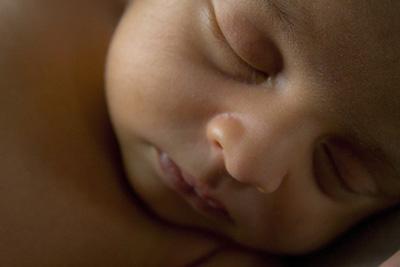
There is nothing more beautiful than a sleeping baby, especially for parents who are often tired themselves. By following a few simple sleep safety tips, you can create a safe place for your baby to sleep.
Once your baby is discharged from the hospital, sleep is important to ensure that you and baby are getting the rest you need to settle into your new routines. The American Academy of Pediatrics (AAP) has recommendations for infants 0-1 year of age pertaining to safe sleep principles, which were updated in July of 2022. Here are the basics that you need to know:
Keep my crib empty
There should be no loose items in the infant’s crib, such as pillows, pillow-like toys, quilts, comforters, mattress toppers, or loose bedding. These items are dangerous for babies and can cause suffocation. If you choose to swaddle your infant, we recommend using a tight-fitting swaddle or sleepsack. Also, if you choose to swaddle them, please make sure they are dressed lightly underneath as overdressing can also increase the risk of Sudden Infant Death Syndrome (SIDS) and suffocation.
Keep my crib flat
Use a flat, firm mattress in your infant’s crib or bassinet covered with a single fight-fitting sheet over top. Sleeping in an adult bed or co-sleeping are unsafe as it increases the risk of SIDS. If your infant were to fall asleep while in the car seat or stroller, transition them immediately to a flat, firm surface once you get to where you are going. Swings, bouncers, and other devices are not designated safe sleep areas. If infants were to fall asleep in these devices, we recommend transitioning them out to a designated, flat safe sleep area. If your infant were to struggle with spitting up after feeding or reflux, we recommend holding them upright after a feed and not elevating their sleep surface with equipment such as crib wedges as this is unsafe due to the risk for suffocation and airway compromise. Discuss any positioning changes and recommendations with your pediatrician prior to implementation.
Put me to sleep on my back and in the crib
Back is always best! It is not safe to place infants on their tummy to sleep. Back is the safest sleeping position to decrease the risk of SIDS. In this position, an infant’s body is oriented to protect their lungs and airway if they were to choke or experience any vomiting. It is ok if your infant moves on their own once laid down to sleep, but they should always be placed on their back.
Follow these three key principles to ensure that your infant will be sleeping safe and sound at home!
Lara Liszka, OTD, OTR/L, is a pediatric occupational therapist who sees patients in the intensive care nursery as well as at outpatient clinic at Lenox Baker Children's Hospital.